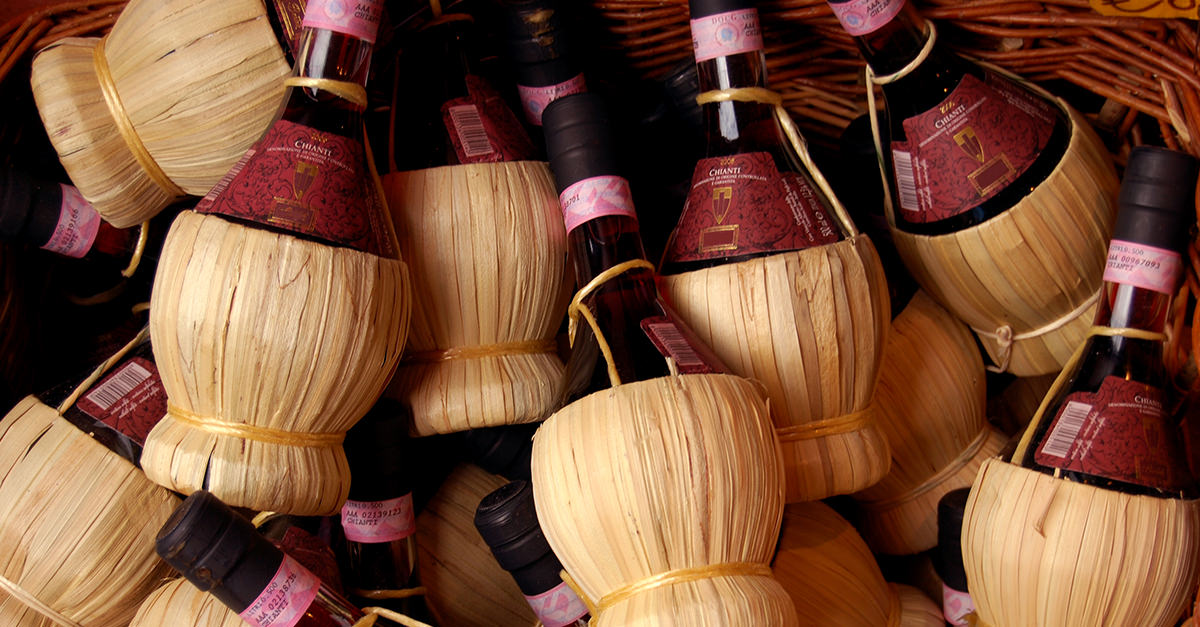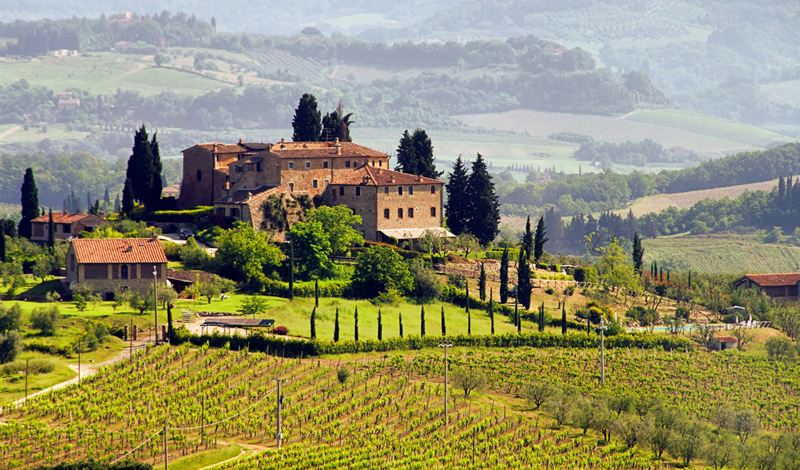There is more to Chianti (Kee-Ahn-tee) than the classic bottle in a straw basket, known as a fiasco, made famous by old school Italian red sauce joints in the ‘70s and Anthony Hopkins in Silence of the Lambs. In fact, Chianti is currently the most popular Italian red wine in America. Known for being a dry red that goes very well with food, Chianti can range in price from $10 a bottle to upwards of $50 dollars for high-end versions. Suffice it to say, Chianti has outgrown its old school straw basket image. In fact, almost none of the Chianti sold today comes in the classic straw basket.
Like most other wines made in the Old World, Chianti derives its name not from the grape used to make the wine, which is Sangiovese, but from the region where it is made. The Chianti region is located in Tuscany, that romantic area of central Italy known for its sweeping landscapes, burning hot sun and its wealth of art and food history. It is from this region that we also get delicious olive oil and Michelangelo’s David.
The Chianti region is located in Tuscany, that romantic area of central Italy known for its sweeping landscapes, burning hot sun and its wealth of art and food history.
For a Chianti to be a Chianti, it must be produced in the Chianti region and be made from at least 80% Sangiovese grapes. While most Chiantis are 100% Sangiovese, some winemakers in the region like to blend the Sangiovese with a little Cabernet, Merlot or Syrah to soften the finished wine.
The two versions of Chianti you are most likely to encounter in a store or on a restaurant wine list are Chianti and Chianti Classico. The difference between the two is that Chianti Classico is considered to be a bit more refined and higher end than Chianti; this is because it’s produced from grapes harvested in the best vineyards of the region. Whether the wine is Chianti or Chianti Classico will clearly be labeled on the front of the bottle.
In both versions of Chianti, you can expect a wine that is very earthy and rustic, high in tannins (it dries your mouth out), has a smell and taste that is reminiscent of cherries and strawberries, and is high in acidity, which makes it go very well with food.
While many people love to pair this classic Italian wine with classic Italian food, Chianti goes well with whatever you feel like eating. It’s as much a pizza and pasta wine as a grilled cheese and fries wine.
So go ahead, pop a bottle of Chianti, turn on The Godfather, and let the wine transport you to Italy.

